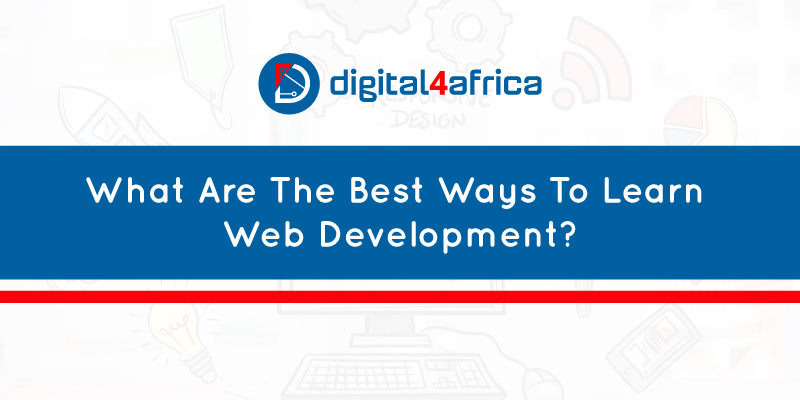How I Became an Excellent Web Developer in Seven Months
In my fourth year of studying Business Information Technology, I had a lot of free time due to online classes. I decided to learn web development, a field I was passionate about. I enrolled in the Digital4Africa web design classes, and this decision changed my life.
By the end of the course, I built my first website. Let me share some tips to help you get started in web development. But first, let’s define web development.
What is Web Development?
Web development is the process of building and designing a website. Think of it as creating a digital home on the internet. It involves making web pages, adding pictures and text, and ensuring everything works properly when you click on links or buttons.
How to Learn Web Development
When I started, I found two main ways to learn web development: writing HTML/CSS files and using Content Management Software (CMS).
The HTML/CSS Approach
HTML (HyperText Markup Language) is like the blueprint of a webpage. It’s the structure that holds everything together. CSS (Cascading Style Sheets) is like the paint and decorations that make your webpage look good.
Here’s a simple example to create a webpage with a title, some text, and a button:
“`html
<!DOCTYPE html>
<html>
<head>
<title>Welcome To My First Webpage</title>
<style>
body { font-family: Arial, sans-serif; }
h1 { color: blue; }
p { color: green; }
button { background-color: orange; color: white; }
</style>
</head>
<body>
<h1>Welcome To My First Webpage</h1>
<p>This is how you create a webpage with HTML and CSS.</p>
<button onclick=”alert(‘Button clicked!’)”>Click Me</button>
</body>
</html>
“`
You can copy and paste this code into a free online HTML compiler to see it in action.
The CMS Approach
Content Management Software (CMS) helps you build websites without needing to code. Popular CMS options include WordPress, Drupal, Joomla, Shopify, Magento, and Webflow. Let’s focus on WordPress.
Understanding WordPress
Theme
A theme is like the outfit your website wears. It changes how your website looks.
Plugin
A plugin is like a special power-up for your website. It adds new features, like a contact form or a gallery.
WordPress allows you to drag and drop elements to design your site, making it easy and fun to use.
Getting Started with WordPress
Digital For Africa offers an 8-week hybrid training program to teach you how to create websites with WordPress. You can join by calling +(254) 701 056 985 or visiting our website for details. Evening classes at 6 p.m. are perfect for busy people, and we have hands-on sessions once a week at our office in Nairobi Garage, Delta Corner Annex, Westlands Rd.
The course covers:
- Requirements analysis
- Designing websites
- Optimizing images
- Using AI for copywriting
- Keyword phrasing
- Mastering SEO
You’ll also get a 30-day free mentorship program with weekly meetings to help you with any problems you face while building your website. By the end of the program, you’ll get a certificate and be ready to create professional websites.
Improving Your Web Development Skills
Here are four tips to keep improving your skills:
- Work on Personal Projects
Apply what you’ve learned by creating your own websites.
- Use Online Resources
Sites like Udemy, Coursera, and LinkedIn Learning offer more courses.
- Set SMART Goals
Define Specific, Measurable, Achievable, Relevant, and Time-bound goals.
- Teach Others
Sharing your knowledge helps you learn better and gives back to the community.
Conclusion
To learn web development, start with a single step. Book your slot for our upcoming November class and begin your journey in web development. Sign up now and become part of the exciting world of web creation. Your journey starts here!
This article is written by Manasseh Adina, a web developer at Digital4Africa. Reviewed by Caleb Mwenga


